How to fish the Bridge Pool on the Welsh Dee at Bangor
Table of Contents
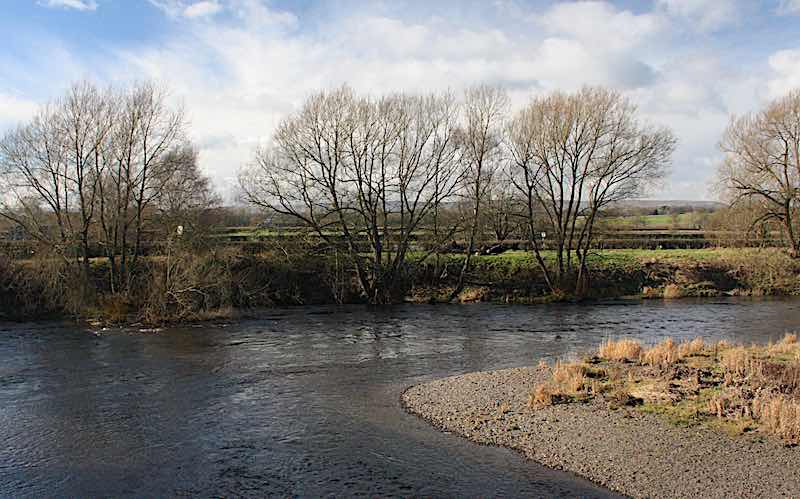
The Bridge Pool is a small pocket of water located directly below the old village bridge, which has formed in the gravel bed. It changes shape and size occasionally when the gravel moves during winter floods.
When the river is at its summer level, fly fishing for grayling & trout in the shadow of the bridge often produces fish.
I’ve found dry-fly fishing or Euro/Czech nymphing to be the better techniques to use. In addition, fishing the fast run that leads down to Dukes Pool with either wet flies or Czech nymphs can pay dividends, especially, when the river is low.
On their journey upriver, salmon occasionally rest in the pool below the bridge but to-date I have not yet fished this pool for salmon.

Fishing the Bridge Pool for trout & grayling:
To date, I have only fished the Bridge Pool a few times, mainly when the river is at its summer level. However, on these few occasions, I have caught grayling and trout on both Czech nymphs and dry flies, especially in the shadow of the bridge.
To help with the account of how I fish this pool I have produced the following sketch (N.B. the gravel at the head of the pool moves during floods. Therefore, the topography at the head may have changed considerably since producing the sketch).
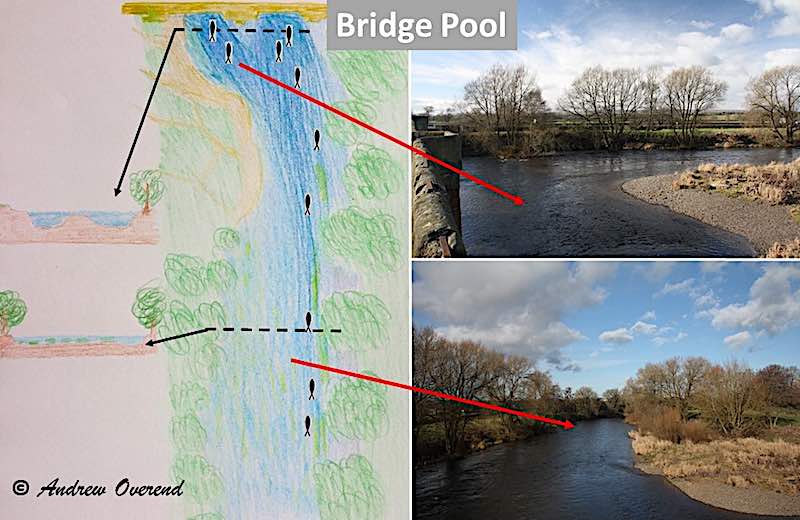
Fishing from October to February
On the Welsh Dee, my attention turns to fly fishing for grayling from October to the end of February. There are many good pools for grayling fly fishing on the Village beat and Bridge Pool is one of them
The Bridge Pool is best fished when the river is close to its summer level (i.e. below 0.55m Manley Hall gauge).
After taking the river level into consideration, my approach to fishing this pool is influenced by signs of surface fly activity.
Euro / Czech nymphing the Bridge Pool:
In the absence of emerging flies and/or rising fish, I usually start by Czech nymphing because fish are likely to be grubbing on the riverbed for food. My nymph selection depends on a number of conditions; covered separately on the fly-fishing technique page.
Usually, I start fishing the tail of the Bridge pool from the gravel bank and work my way up towards the bridge. Fish can be “tucked in” close to the bank, thus it’s an important approach with care, keeping a low profile, and search that area before working out into the main flow.
Afterwards, I tend to fish the riffle that leading down to Dukes Pool; by fishing across and downriver in a zig-zag fashion. This involves fishing the riverbed systematically across the river as far as safely possible, then fishing back to the near bank at a 45oC downstream angle. Repeating this process to cover its full length down to Dukes Pool.
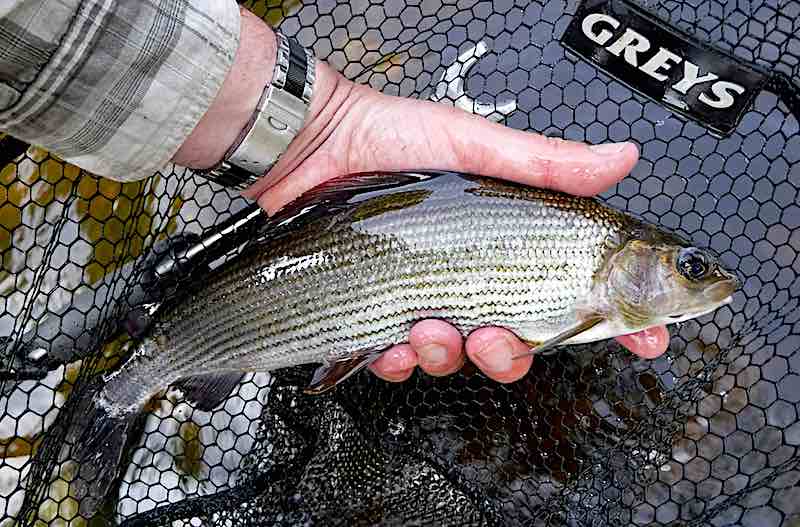
Wet fly fishing the Bridge Pool:
If Czech nymphing through the riffle is unsuccessful or I notice fish taking flies, then I often switch to fishing a team wet flies or North Country spiders. Fish will start taking flies in the surface layers at some point during the day. Usually…
- around mid-day during the cold months,
- during summer at either end of the day: early morning and especially late evening.
If possible, it’s best to fish wet-flies or spiders starting from the end of the run and work upriver. Avoid the temptation to cast directly to fish rising close to the far bank.
A better approach is to divide the width of the river into 3ft lanes and search each lane before the lane holding the rising fish. This approach often yields fish that you have not seen and that otherwise would have been spooked by targeting the fish you have seen.
Further information on fly selection is found on the Wet-Fly Fishing page.
Dry fly fishing the Bridge Pool:
Usually, I switch to the dry fly when fish are constantly rising to emergers or rising close to obstacles such as overhanging trees or exposed rock and ledges. No surprising fly choice depends on what is hatching.
It’s best to base the fly choice on imitating the hatch. However, if this is no possible one of the following will usually catch grayling from October onwards:
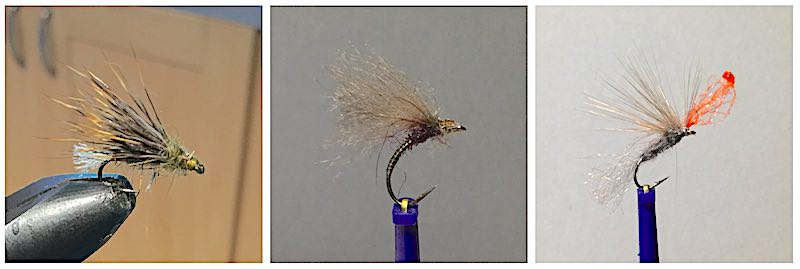
Additional reading - Fly selection for the Bridge Pool Oct to Feb:
If you are interested in learning more about the various flies that I find work on the Welsh Dee from October to February then it’s worth reading the following post:
Fishing from March to September
The brown trout fishing season on the Welsh Dee starts on the 3rd March. At this time of year, the weather is often more like winter than spring. Therefore, my approach to brown trout is similar to that described for autumn & winter grayling above.
Once April arrives, the weather usually starts to warm up and hatches of Large Dark Olive, March Brown and other olives become more frequent from mid-morning to mid-afternoon. This provides more opportunities to catch brown trout on the dry fly, by matching the hatch.
As May approaches fly hatches become more prevalent and brown trout are keen to intercept emerging fly life. This is when dry-fly and upstream wet-fly fishing often yield the best results. Unless the river is carrying some colour when Czech nymphing generally produces better results.
The river flows in a northerly direction through Bridge Pool and on sunny days it is too bright to fish this pool from 11 am to 4 pm. Therefore, it’s best fishing this pool early morning and late evening.
On dull, overcast days this pool can be fished throughout the day, but the fishing still slows between 1 and 4 pm. Making this a good time for a break before resuming the challenge in the evening.
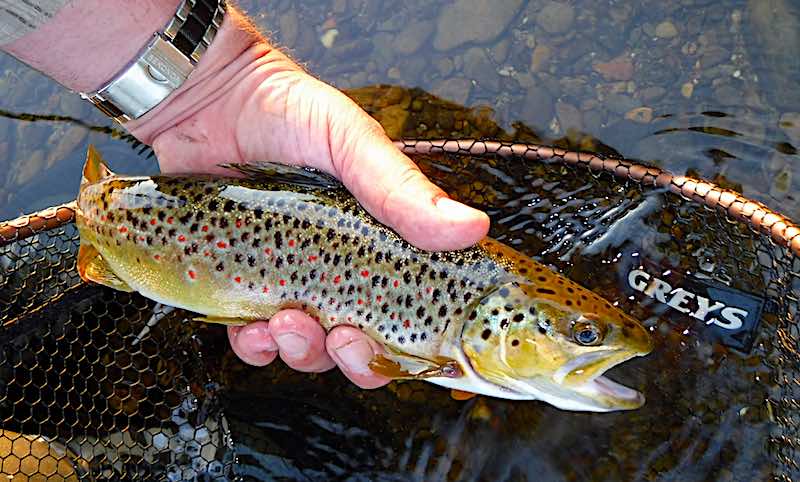
The following links will take you to the flies I use for the remainder of the trout fishing season on the Welsh Dee:
Where do I get day tickets?
The Bridge Pool is part of BODSA Village beat and day tickets for visiting anglers can be obtained from the ‘Middle Shop’ in the village of Bangor-on-Dee (Tariffs).
If further information is required, please click here to contact the club, who will be more than happy to help you.
How to get to the Bridge Pool?
Park at Bangor-On-Dee village and walk to the Old Bridge where the pool can be accessed opposite the Royal Oak Pub.
[Disclaimer – like most outdoor sports, fishing is not without its hazards. Therefore, you MUST do your own RISK ASSESSMENT before starting to fish the Bridge Pool; especially if you decide to wade and/or fish at night. In addition, you must follow the Bangor-On-Dee Salmon Anglers club rules when fishing this water.]